Updated on May 7th, 2024
If you have ever wanted to experience volunteering at a wildlife sanctuary then Na’ankuse is hard to beat. Here, I give an account of my first week working with wild animals in Namibia. It includes preparing & feeding, game drives, playing with baboons & a unique opportunity to spend time with one of the oldest tribes in the world.”
Where?
N/a’ankuse Wildlife Sanctuary, Windhoek, Namibia
Why?
I was looking for an opportunity to volunteer on a wildlife project & discover a new country at the same time. On my Life List I found Namibia. N/a’ankuse jumped out at me as a unique chance to get up close & personal with some of Africa’s most fascinating wildlife. You can read more of my experiences in Week 2. In addition, why not check out my tour in Namibia or the story of my final night fighting a devastating & terrifying bushfire.
If you are interested to read about other amazing animal interactions, then look no further than my Top 11 Wildlife Experiences in the World.
What?
N/a’ankuse is a sanctuary which provides a safe refuge for orphaned & injured wildlife including cheetahs, lions, leopards, wild dogs, caracals & baboons (as well as a whole lot of farm animals!). They have a thorough programme of rescue & rehabilitation and are at the forefront of the fight to mitigate the numbers of animals (big cats) who are shot as a result of human-wildlife conflict.
Since 2008, the project has rescued & safely re-released over 80 cheetah, leopard & brown hyena. In addition to the sanctuary, they have a number of other projects throughout Namibia where you can take part in research & get further involved. A worthy & responsible cause!”
Volunteering at a Wildlife Sanctuary
I booked a 2 week (minimum allowed) stay through The Great Projects thinking it was a direct booking. They organised everything for me & although they can also book flights, I did this independently. The Great Projects has a whole host of volunteer opportunities across the world. You can actually book directly through the sanctuary and this could give you a bit more flexibility over the sites you choose to visit and how your whole stay looks. Be aware that 2 weeks doesn’t quite cover the whole programme of activities & many people stay significantly longer. For me, I felt 2 weeks was perfect & I was able to juggle around a few things so I could take part in everything I wanted (e.g. cheetah walk).
Once you arrive at N/a’ankuse you are put in a group which defines your chores & changes daily. Basically, for some jobs e.g. enclosure cleaning, food prep etc. they are ‘chores’ (but fun as you often get up close & personal with the animals), but often it’s more accurate to call them ‘treats’ – baboon walk, cheetah walk, carnivore feed etc.
I was in team Porcupine where for the most part there were only 2 of us. This could be seen as a limitation due to workload. However, I saw it as an advantage to get involved in everything, while maximising my time with the animals. If you want to see the video of my time at the sanctuary you can see my Video Diary.
What did I do in Week One?
Everyone gets an induction morning at the start which tells you the basic background & philosophy of N/a’ankuse and what to expect. After that, you can get stuck in. For my 2 weeks, I felt the first I spent doing mainly the ‘chores’ & the second was more about the ‘treats’. So, my first week consisted of:
1. Game Count
To me, this felt more like a Game Drive. We were in an open safari truck & taken by one of the coordinators on a fixed route, making notes of anything we saw with 4 legs & within a 400m radius. The aim was to keep track of the wildlife on the reserve. Then they know if they need to sell or redistribute to other areas of the country. On my first game count, we saw zebra, waterbuck, oryx, kudu, steenbok, giraffe, jackal, impala & a tawny eagle, as well as going on foot to investigate a gathering of vultures which turned out to be a fresh but stripped oryx carcass.
Along the way we also picked up meat for animal feeding so the second half of the drive I spent trying not to let my stuff fall on the raw meat below my feet… welcome to life on the sanctuary!”
2. Food Prep
The morning was spent chopping up & preparing the food for the animals around the farm. On Wednesdays & Saturdays, this included donations of out of date fruit & veg from Woolworths (I was particularly jealous chopping up delicious-looking avocado for the vervet monkeys, Gollum’s Gang!).
All instructions on what each group of animals or individual needs is provided & all have special containers so it’s easily identified in the fridge when needed. As a lot is mixed with mielie pap (cooked corn), it’s advisable not to wear your best clothes! This also probably won’t be your favourite job if you don’t like handling meat. The last chore of the morning (which clearly everybody fought over…or maybe not!) was to go through the buckets of food waste & take out anything we wouldn’t eat (fruit peelings, eggshells, tea bags) & then mix the leftovers with mielie pap spread across the table. As you can imagine, this got very messy but provided all the food required for the baboons & was actually quite fun!
The afternoon of food prep was the really good part – feeding the animals! There were lots of tricks used in distracting & moving some of the characters so you could feed them which I learned along the way from my fellow volunteers & coordinators.
Some of my highlights were feeding Speckie (the warthog) who prefers to lick & nibble your boots than have her own food, distracting the more aggressive mongoose (Snippy) with meat while we hand fed the baby (Pumpkin), who used to be a pet so needed more attention & protection.”
I also loved seeing how fast the tortoises moved. When they caught sight of us spreading mielie pap on board, they were very speedy! Priceless!
3. Research
From my experience, you could get involved in all number of things in research & what you do will depend on what the day brings. On mine, we went to get a tyre off a calf’s neck, replaced the batteries & cards in a couple of camera traps, went on a drive around the newer part of the reserve and got to see, learn about & activate 2 GPS collars (1 cheetah, 1 leopard) which had just been delivered. Then we spent the afternoon looking through photos from the camera traps which had been filed under ‘Nothing’ & checking that they were in fact… ‘Nothing’! Not the most stimulating of afternoons (basically watching photos of grass move) but essential to clean up the records. And, we did manage to find a lot of birds & even a leopard which had been photographed at night….definitely not ‘Nothing’!
 4. Enclosure Cleaning
4. Enclosure Cleaning
This involved mucking out the smaller animals around the farm while also giving them the morning feed. For the most part, it was picking up poo & feeding the animals.
Previously, I had also loved feeding the meerkats (6 groups in total). However, during this session, one of them bit my fellow volunteer on the leg. This took the shine off the experience a little. Both she & the offending meerkat were fine & she rejoined us after cleaning herself up.”
In addition, we got chance to pick up poo in Ebony, the baby cheetahs enclosure (she was hit by a car, abandoned by her mother & is being rehabilitated after an operation to fix her hip). We also got to throw chunks of zebra to the smaller cheetahs & go inside the enclosure with the beautiful caracals while they ate the meat we had taken for them. Not things you do on a normal day at the office!
5. Ancient Skills with the San Bushmen
On the final afternoon of the week I was supposed to be on Enrichment (creating something fun &/or stimulating for one of the animal enclosures), but instead I opted to pay (NAD$250) for an excursion to spend the afternoon with Africa’s oldest tribe. It was a fantastic experience! We met a family (father, mother, son, 2 sisters in law & one of their babies), who walked & talked us through (in San via a translator & guide) how they use the various bushes & plants for survival. This included learning their art of medicine, making knives, bows & arrows and how to start a fire & create a trap for guinea fowl.
The last 2 we also got chance to try ourselves. One of the girls had been avidly watching the creation of the trap & was able to recreate a working model 1st time around – very impressive!”
The afternoon finished with an opportunity to buy some jewellery (San women make beads out of ostrich shells) & they performed a few songs while the men showed off their dance moves. A unique & memorable experience all round – thoroughly recommended & you can watch the video.
Weekends
Weekends at N/a’ankuse are a little lighter on the work. We were put into larger groups to get the essential tasks covered. I was lucky on my first Saturday that this involved Baboon Walk – soon to become my favourite activity!
6. Baboon Walk
Here you take the smaller baboons out of their enclosures for a short walk away from the farm. There they can effectively run free for a couple of hours.
The rules of Baboon Walk are that you just start walking & when the baboons are released they follow you, climb on you, sit on your shoulders or head, maybe fight over you or on you, & occasionally cover you pee or poo! But where else do you get to do that on a Saturday morning?!”
I got such a thrill when the first baboon gave me the seal of approval by sitting on my shoulders for the walk & was even willing to fight for his spot!
Once we got to the trees they were free to do what they wanted. This included sleeping on us, grooming, walking over or sitting on us, or completely ignore us. If you stood up you could become a new game & they liked to be swung around – great fun watching the joy on their faces! If you sat near the tree we were warned they could jump on us which could be a big shock. Or just pee on us from a height!
The Walk Home
When it was time to leave we just started walking again, they followed & most impressively knew which enclosure to head for on our return. One of the group, Shrinky, was picked up as a baby with brain damage. She was adorable and as we got to the end of the walk I said “Hello” & she reached up to be carried.
Unlike the others she was unable to grip so carrying her was a little but more hard work. When I put her down into the cage she bit me, which I chose to take as a thank you!”
Saturday afternoon was a quick feed where I discovered another new favourite – Porcupina, the porcupine. She had great fun wrestling the food from me while I was distributing it into wooden rings. My fellow volunteers created the rings during an enrichment session to make feeding more interesting for her. I found it a challenge to feed while trying to avoid getting jabbed by one of her long spines.
They then organised an activity (some form of touch football which I opted out of) before a fun evening of karaoke, successfully supporting my friend Linda to win a limited edition t-shirt, while murdering songs by Elvis & Dolly Parton!
Sunday’s were very light – you either fed the animals in the morning or the afternoon. We had morning activities & opted to feed the meerkats… this time wearing fireman’s trousers just in case we got a nibbler!
What did it cost?
Through The Great Projects, for 2 weeks on the sanctuary, it cost UK£775, including all meals, but flights were organised separately. It was then an additional UK£350/week if you chose to stay longer. I was asked to pay UK£195 at time of booking & the remainder up to 60 days before the start date. They could take up to 60 volunteers at a time. However, the earlier you booked, the more likely they were to have places when you want them.
The visit to the San people was $250 Namibian Dollars (NAD), organised through the sanctuary. NAD & South African Rand (ZAR) are used interchangeably in Namibia.
What next?
To find out more about my activities at N/a’ankuse read my next post with details of my second week, involving walks with cheetahs & hyenas, measuring cheetah footprints while spending the afternoon in a cage with 4 of them & sleeping with the lions!
Interested to read more?
You can also Subscribe Here to get regular updates & special offers from Sue Where? Why? What? along with a copy of my 201 Inspirational Travel Bucket List Ideas for FREE! I hope you chose to join me on the journey.
This post may contain affiliate links. By using these, Sue Where Why What may receive a small commission. You will not pay any extra charges for this. My opinions, reviews & recommendations remain my own. For more information see my disclosure.
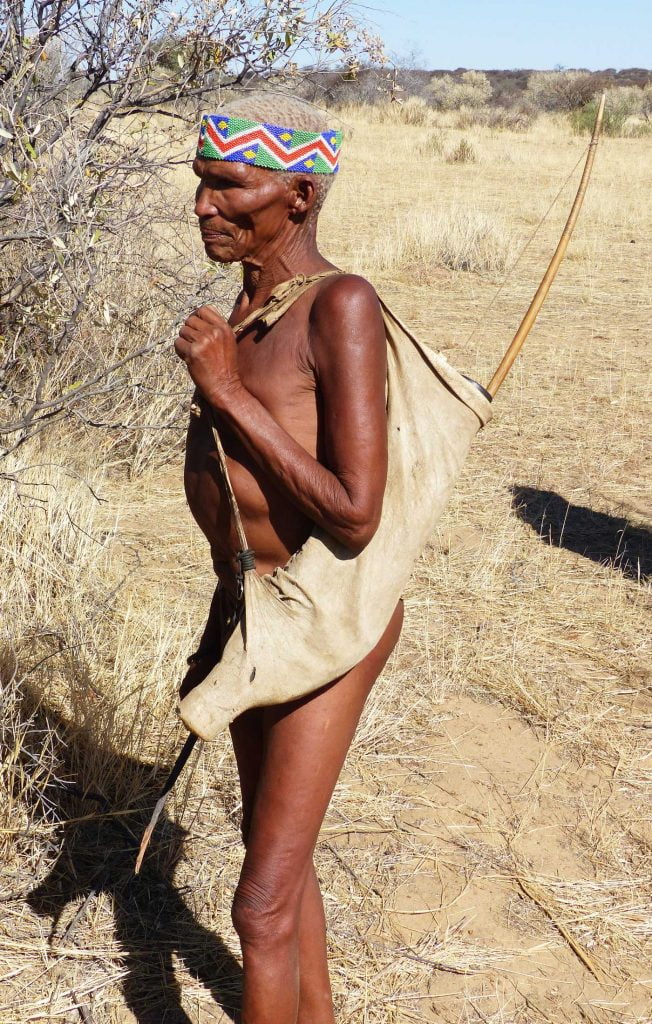
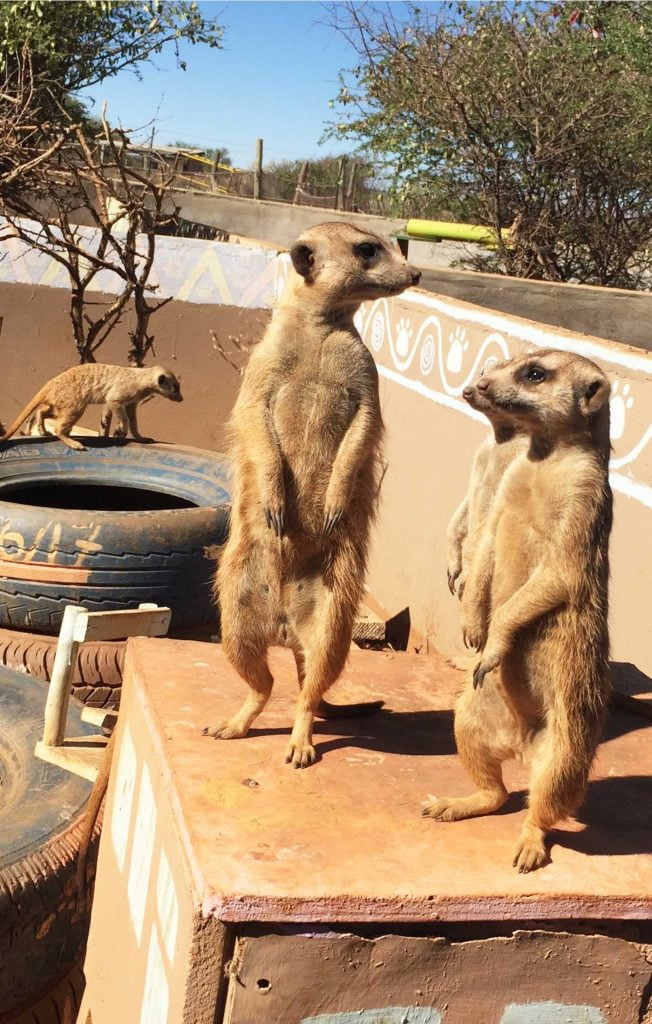

 English
English 

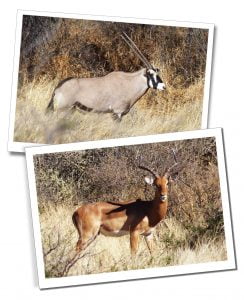


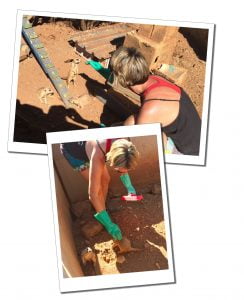
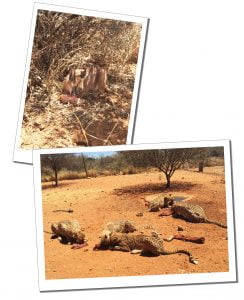

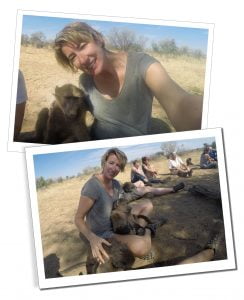
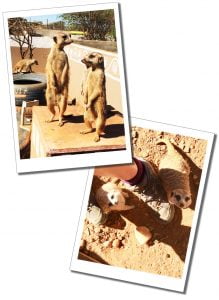










Thank you for the information